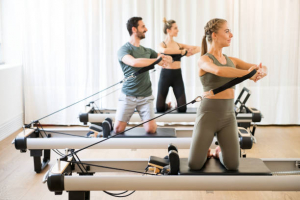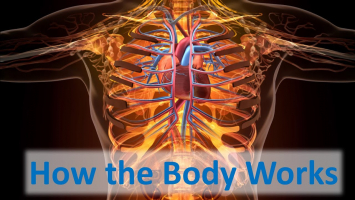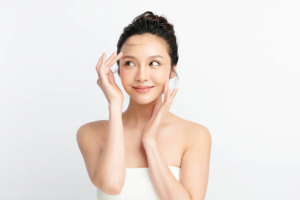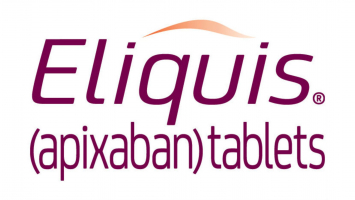Top 7 Common Questions About Pilates Answered
Pilates has been a part of the popular exercise scene for over two decades. However, there is still considerable misunderstanding about what Pilates is and ... read more...what advantages it might provide. So, to assist you understand why you should try Pilates, here are the top questions about Pilates that most people have about it.
-
Pilates was brought to America in the 1920s by physical trainer Joseph Pilates as a means to assist injured athletes and dancers safely returning to activity and maintaining their health. Pilates has now been modified to meet the needs of the general public. Pilates may be both an aerobic and non-aerobic workout. Because you move your body through precise ranges of motion, it necessitates attention and focus. Pilates lengthens and extends all of your body's major muscle groups in a balanced manner. Finding a central point to direct your body via movement necessitates attention. Each exercise has a certain location, rhythm, and breathing pattern that must be followed.
Pilates has a number of health advantages, including better flexibility, spine stability, posture, physical coordination and balance, and focus. Through deep breathing and body awareness, doing Pilates also improves muscle strength and tone, notably in the abdominal muscles, lower back, hips, and buttocks, muscular control of your back and limbs, lung capacity, and circulation. Furthermore, it balanced muscular strength on both sides of your body and makes rehabilitation or prevention of injuries caused by muscle imbalances, relaxation of your shoulders, neck, and upper back, and safe rehabilitation of joint and spinal injuries, as well as prevention of musculoskeletal problems.
Pilates does not require you to stress your muscles to exhaustion, so there is no sweating or straining involved, only extreme attention. A variety of exercise sequences are repeated in low repetitions, generally five to ten times, during the course of a 45 to 90 minutes workout. Resistance is achieved by the use of mat work and specific equipment. The Pilates technique is tailored to each individual, and exercises are re-evaluated on a regular basis to ensure that they are still appropriate for that individual. This approach may be used by anybody, from professional athletes to persons with limited mobility, pregnant women, and people with poor fitness levels, due to the particular attention.
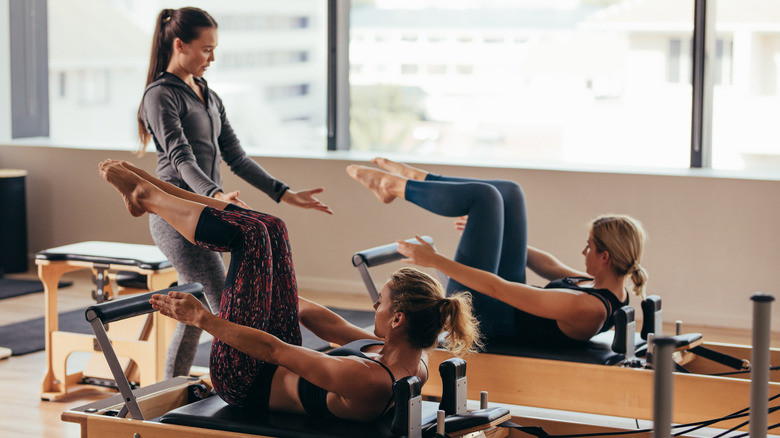
Source: healthdigest 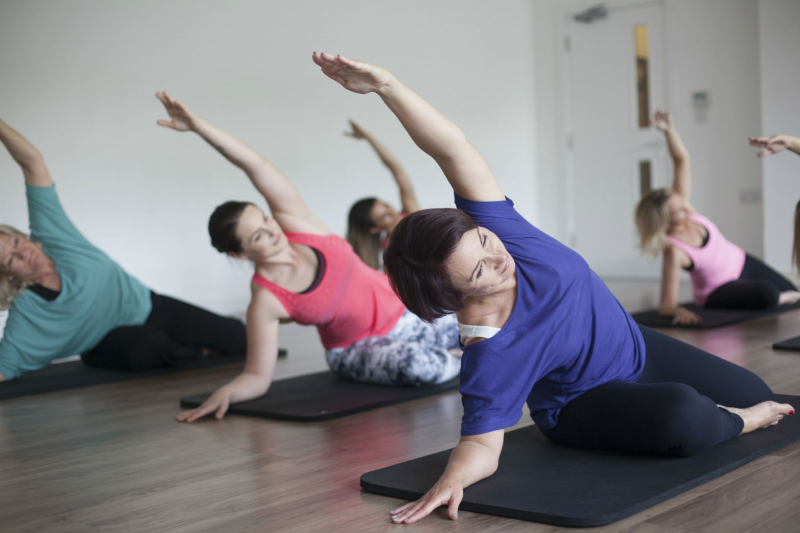
Source: verywellfit -
Yoga is a kind of exercise that aims to unite the physical body, mind, and soul. Yoga instructors frequently treat the mind and body as a unified entity. As a result, when Yoga practices are used in the right setting, they may be an effective approach to repairing your physical body while also restoring mental equilibrium. Yoga has become a popular therapeutic practice for this reason. Most importantly, Yoga improves your body's flexibility and encourages calm, even if you're trying to cross some of life's most demanding limits. And Pilates is a form of exercise that attempts to improve both physical and mental health. It focuses on the entire body as well as the mind. When doing Pilates, on the other hand, your concentration is on the core of the body. As a result, the remainder of the body may move around freely. Both your body and mind would get stronger as a result of this. If you're a Pilates fan, you'll know that there's a delicate balance between strength and flexibility that allows your slimmer muscles to get stronger.
This article will compare Yoga and Pilates in terms of definition, equipment, meditation, flexibility, and weight loss. By definition, Yoga is a therapeutic activity that aims to bring physical, mental, and spiritual peace to people, whereas Pilates is a type of exercise that uses special equipment to enhance physical strength, flexibility, and posture as well as mental awareness. In terms of equipment, Apart from a yoga mat, yoga does not require any specific equipment, but Pilates may make use of several training machines such as the reformer, spine corrector, mini barrel, tower, and so on, in addition to the mat exercises. Regarding meditation, Pilates is not a contemplative practice like Yoga. As a result, Yoga may be a useful tool in the battle against mental illnesses such as sadness and anxiety.
In terms of flexibility, Yoga helps you improve your body's flexibility and the flexibility of your joints, whereas Pilates focuses on relaxing and strengthening existing tight muscles in your body. When it comes to weight loss, Yoga and Pilates are both beneficial for strengthening all of your body's muscles, however, when it comes to weight reduction, Pilates workouts utilizing various Pilates equipment are preferable. Pilates workouts, as compared to Yoga, can improve your cardio fitness and help you burn more calories. In brief, the fundamental difference between Yoga and Pilates is that Yoga emphasizes body and mind relaxation, whilst Pilates emphasizes strong muscles and physical conditioning. Many young people nowadays see the importance of both Yoga and Pilates, and there is a whole new generation of people who are attempting to include both into their busy lives.
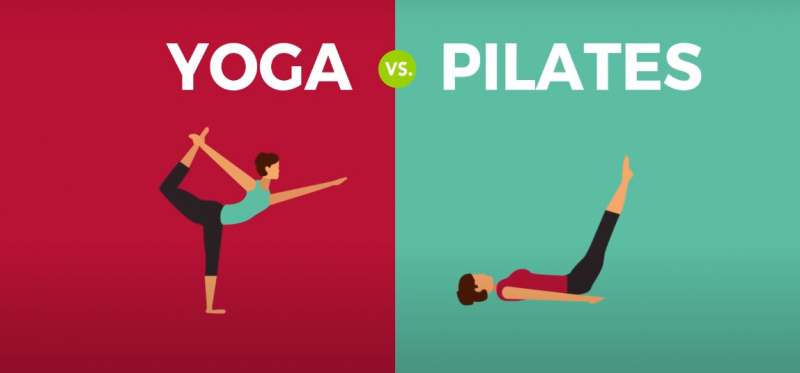
Source: PumpUp Source: PumpUp -
Pilates is a well-known low-impact workout. It helps you tone up, create lean muscle, and improve your posture. Pilates can be useful to your health and can assist you in maintaining a healthy weight. Pilates, on the other hand, may not be as helpful as other aerobic workouts like jogging or swimming for weight loss. This is due to the fact that typical mat Pilates programs burn less calories than other aerobic activities. If you love Pilates lessons, however, you are more likely to continue your exercise program if you attend them on a regular basis. You'll be more inclined to live a healthy lifestyle as well. If you want to lose weight, combine Pilates with a nutritious diet and other types of exercise. Combine Pilates with weight training and other aerobic activities like walking, swimming, jogging, or cycling.
The amount of calories you burn in a Pilates session is determined by your current weight, whether you're performing a mat or reformer class, and the class's difficulty level. One beginner-level 50-minute Pilates mat session burns roughly 175 calories for someone weighing around 150 pounds. A 50-minute advanced session burns about 254 calories. A Pilates reformer class or any Pilates activity that raises your heart rate will burn more calories. To shed one pound, you must expend around 3,500 calories. If you want to reduce weight, you should combine Pilates with aerobic exercises like walking, jogging, or cycling. Incorporate lean protein, entire grains, fruits, and veggies into your diet.
If you're new to Pilates, aim to do it two to three times a week to reap the full benefits. More advanced Pilates courses, such as Pilates reformer classes and combo classes like Piloxing (Pilates and boxing) or Yogalates (yoga and Pilates), are also available. These full-body sessions burn more calories than a regular Pilates mat class. For optimal results, attend these sorts of combo sessions a few times a week if you're attempting to reduce weight. Pilates lessons can be alternated with strength training (with weights) and aerobic exercise. Pilates, when combined with other types of cardio and strength training, as well as a balanced diet, is an efficient approach to tone your muscles and aid in weight reduction.
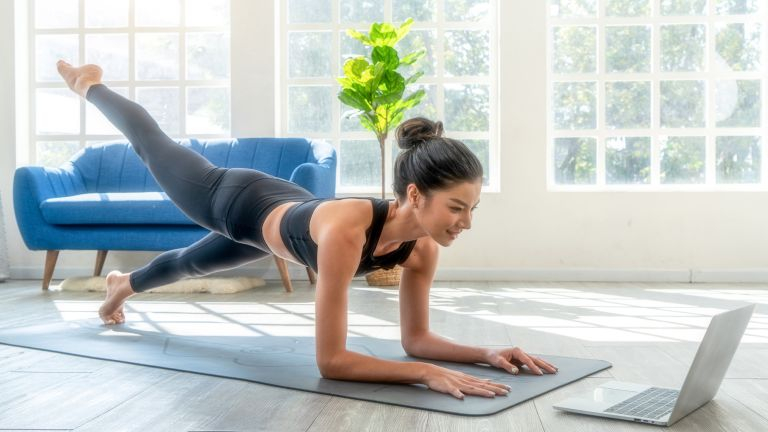
Source: fitandwell 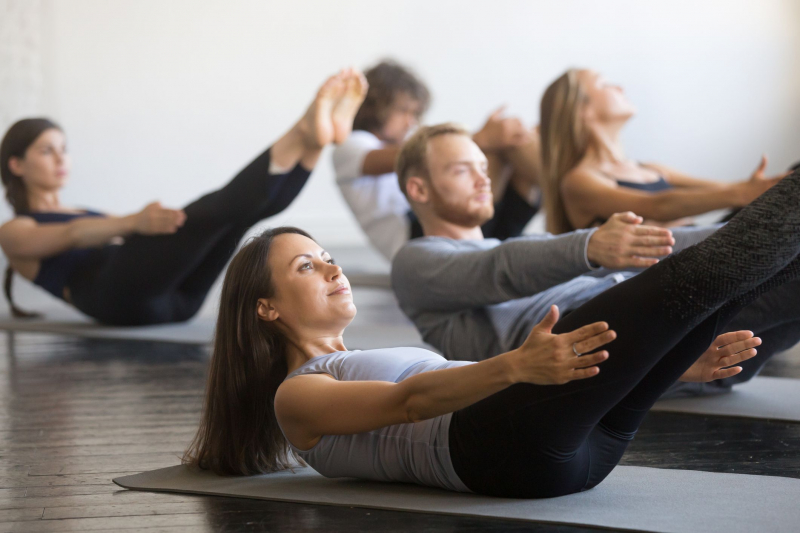
Source: womenshealthmag -
This is definitely one of the questions about Pilates that people ask the most. The answer is definitely yes. Pilates is not only safe for most individuals to undertake, but it is frequently suggested or utilized for therapy and rehabilitation by physiotherapists and other physical therapists. Pilates' main goals are to improve posture, rectify imbalances, and improve functional movement. Pilates is a powerful therapy against back pain because it pays special attention to the spine and core.
Many people have become more interested in physical health as a result of Pilates workouts. A Pilates workout consists of a sequence of stretches. With a limited amount of floor space and minimal equipment, almost anybody may perform at their home or business. They are advised of more than just general workouts. People who suffer from back discomfort as a result of various accidents or ailments should also consider them, according to fitness experts. The Pilates program, on the other hand, has sparked some criticism. The improper technique might result in neck or back pain. Before beginning Pilates, consult with your doctor or physical therapist.
Pilates, like other full-body workouts, has the potential to cause injury. Lower back and/or neck discomfort are the most common complaints. Improper form or over-exercising are more likely to blame. Muscle/ligament strains and spinal disc injuries are common Pilates injuries. This is also true for persons who have been wounded while doing yoga. Pilates is designed to primarily target the deep abdominal muscles. Both are located around the ribs, pelvis, and spine. Working them properly might help you develop a strong core. Improper exercise can erode your strength in critical areas and cause substantial discomfort. A Pilates injury may be avoided by ensuring that you receive high-quality teaching and following it closely. Before enrolling in a class, be sure the teacher is certified to teach these activities. To avoid injuring yourself, you should also be prepared to follow the letter's directions.
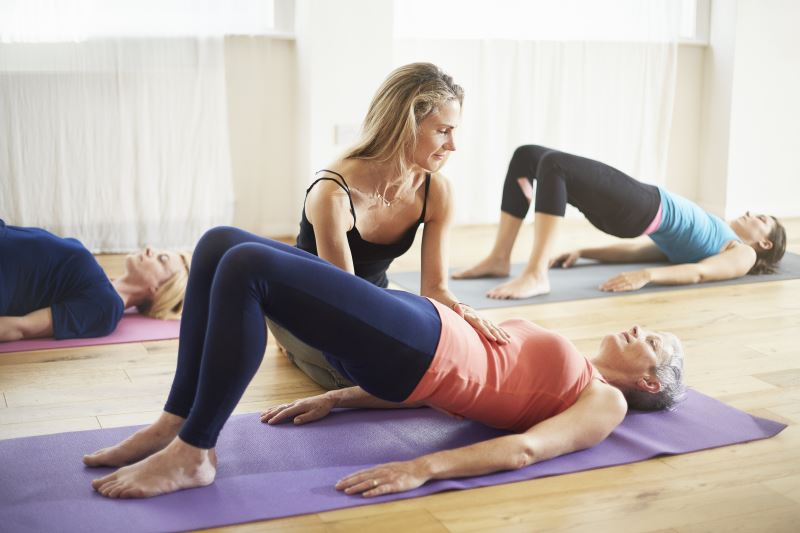
Source: clinicalpainadvisor 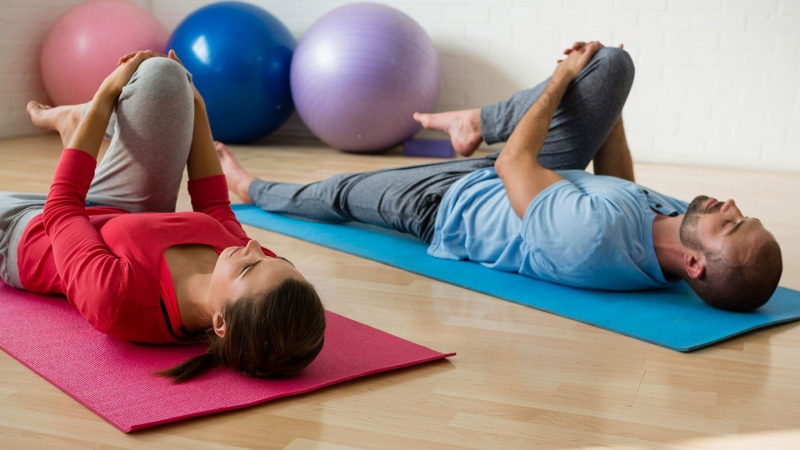
Source: everydayhealth -
Although many Pilates sessions in studios include equipment and machines, they are not required to perform Pilates movements. Pilates was created on the mat first, and machines were added subsequently as a method to supplement and enhance the mat training. Even if you're in really good shape, you should start with a beginner's Pilates session to familiarize yourself with the motions. You'll also become used to activating your core and feeling what it's like to tension your muscles as you balance, elevate, move, and recline using your own body weight. There are a few pieces of equipment that will truly assist you to advance in your Pilates routine.
Some simple types of equipment are used to supplement the exercise that you can use at home. The first is the exercise mat. Pilates can include a lot of floor work, so it's critical to preserve your joints as you exercise. When using a padded exercise mat, make sure your spine and knees are cushioned. The exercise mat is lightweight and portable, allowing you to quickly define your training zone and train on a wipe-clean, long-lasting surface. Second, this is a Pilates Ring with two grips on either side that is both flexible and firm. Squeeze the ring for more resistance training. Suitable for all levels. The ring provides a focal point and ensures that all of your muscles are engaged while holding poses. The smooth, curved handles are ergonomically engineered to fit gently on your palms and the inside of your knees. Finally, Mirafit Pilates Balls, which are smaller than gym balls, may be utilized to improve your workout by giving support, resistance, and concentration. To roll out and work your core, position one under both hands, or place one in the small of your back while on all fours to balance and stretch. You may also use them to rest your feet while performing glute and hamstring training activities like hip lifts.
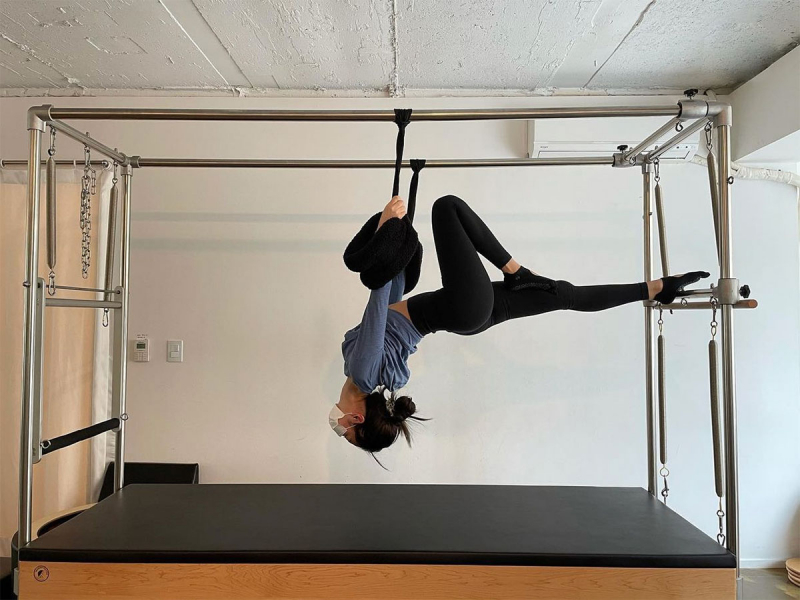
Source: bazaarvietnam Source: SeniorShape Fitness -
Without a doubt, no. This is one of the most common questions about Pilates. Flexibility is necessary for good mobility, but it takes time to develop. Meanwhile, there are always adaptations you may utilize to complete all of the workouts and achieve your objectives. You may learn and establish optimal movement patterns for everyday tasks via regular Pilates practice, lowering your risk of injury. This is especially crucial for the elderly, as their strength, flexibility, and agility can all deteriorate as they age.
How does Pilates improve flexibility? The pilates technique is a safe blend of static and dynamic stretching exercises that promote flexibility. Stretching exercises have neurophysiological features, according to Phrompaet et al. Soft stretching of tissues and muscles stimulates the Golgi tendon organ, resulting in sarcomere lengthening when the Pilates posture is used. Repetitive stress increases the plastic deformation of tissues in the elastic range, allowing the collagen fibers to gradually reorganize. Flexibility or stretching exercises are important for improving functional quality of life, and performance, and reducing injury and suffering. Pilates is a tried-and-true approach for building flexibility, which becomes more vital as we get older. If your body creaks a little as you stretch, it's time to look into ways to enhance your flexibility.
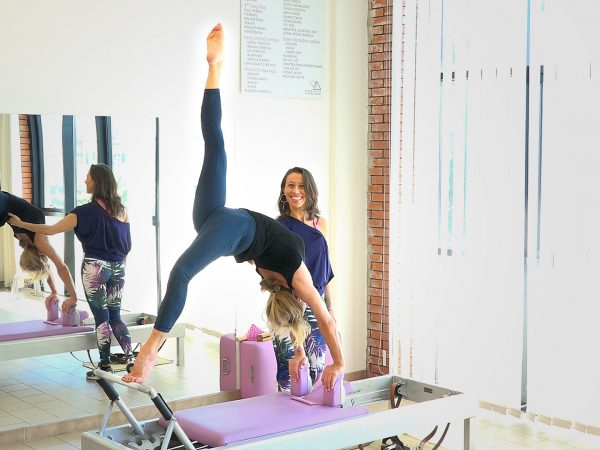
Source: dorno 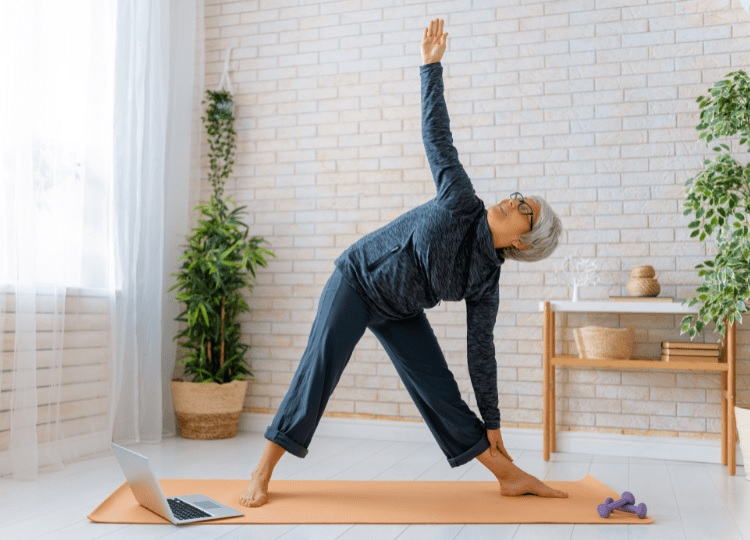
Source: fitnessdrum -
Pilates is a low-impact exercise that improves flexibility, strength, and muscle tone, and it's safe to do while pregnant. Pilates can assist with labor and delivery because it focuses on the core. It can improve posture, relieve backaches, and aid with labor and delivery because it focuses on the core. It will also improve your attitude and energy levels. If possible, enroll in a prenatal class. Otherwise, inform the teacher that you're expecting so she may assist you adapt or avoid any potentially dangerous maneuvers. Before beginning or continuing any fitness regimen while pregnant, you should always visit a prenatal healthcare expert.
When a human is growing, a lot happens biologically. Shortness of breath is caused by a rise in blood volume, heart rate, and cardiac output in the pregnant body. Pilates breathing not only soothes the nervous system, decreasing blood pressure, but it also helps build the stamina needed for labor and delivery's mental and emotional power. Pilates has been demonstrated to help with postpartum recovery and to reduce the number of cesarean births (also called C-sections or cesarean sections), delivery interventions, episiotomies, and preeclampsia. Prenatal Pilates promotes body awareness and prepares you for pushing by focusing on the abdominals, back, and pelvic floor. It has been demonstrated to help with sleep and reduce back discomfort. Additionally, engaged diaphragmatic breathing and breath synchrony with movement patterns are advantageous.
Pilates and exercise, however, are beneficial not only to mom, but also to baby. When a pregnant woman exercises properly during her pregnancy, her baby is less vulnerable to some diseases and gets a head start on brain development. Pilates has been found to offer several advantages during pregnancy, both for people who have been inactive in the past and for those who are regular exercisers.
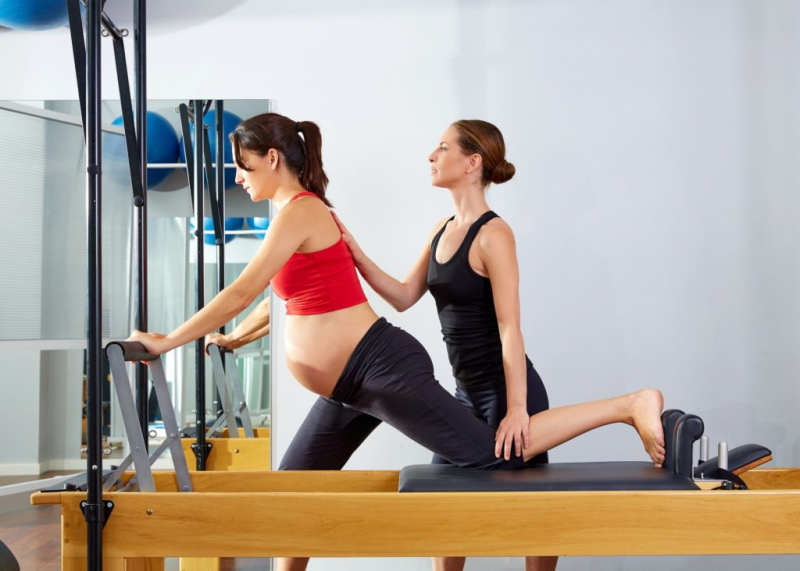
Source: sportsandspinal 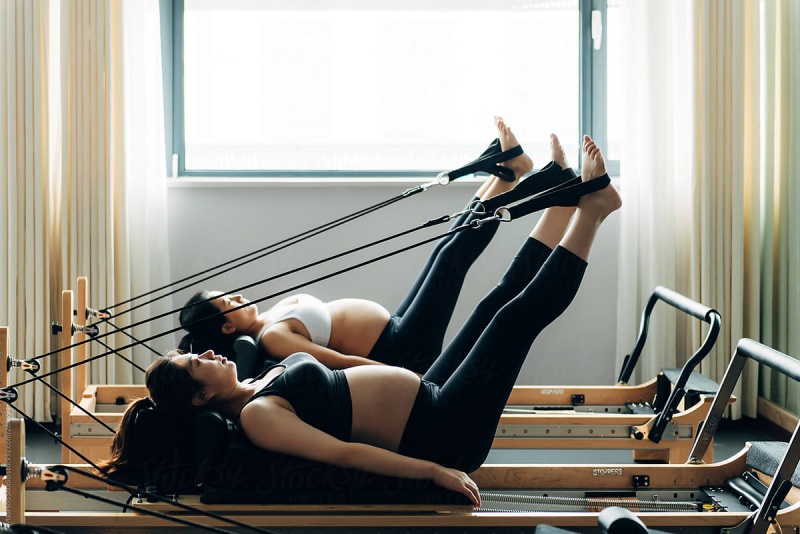
Source: jkzenfitness









